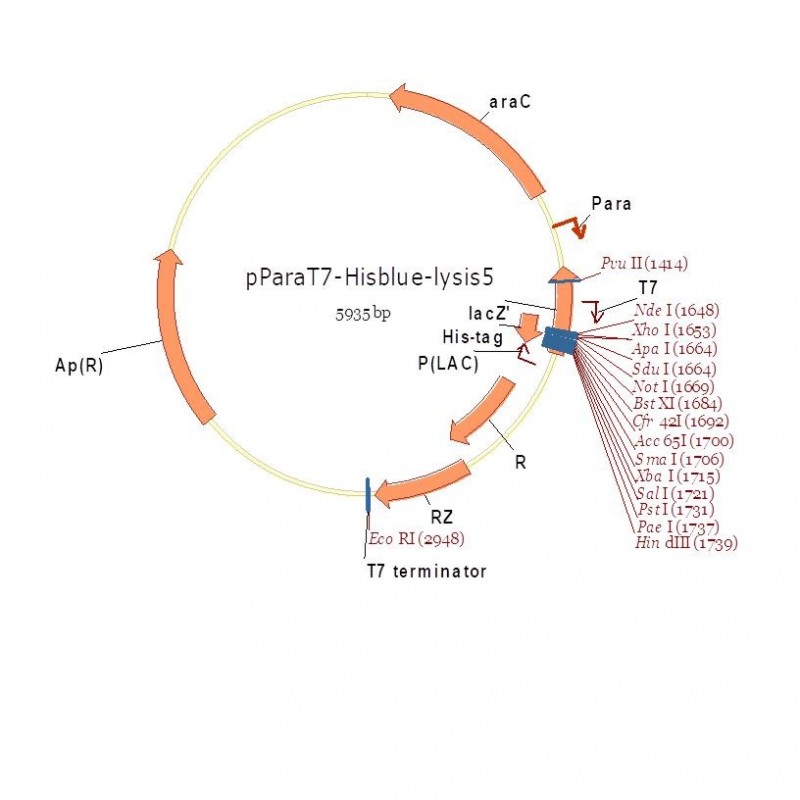




Catalog: AUV30.
Catalog: AUV30.
This vector allows simplified selection of recombinant clones using blue/white selection on X-Gal, IPTG - containing media. Also, it allows expression of cloned sequences both from Escherichia coli arabinose and bacteriophage T7 promoters, and simplifies lysis of corresponding host Escherichia coli cells via freeze/thaw cycling.
This vector is a medium copy number, E.coli plasmid, 5939 bp in length.
The plasmid contains:
1) the ColE1 replicon responsible for plasmid replication (source - plasmid pU119);
2) the Ap(R) gene, coding for beta-lactamase, which confers resistance to ampicillin;
3) the selection/expression module that contains:
a) multiple cloning sites incorporated in the region of modified E.coli lac operon containing promoter Plac and the 5’-terminal part of the lacZ gene encoding the N-terminal fragment of beta-galactosidase. This fragment, whose synthesis can be induced by IPTG, is capable of intra-allelic (alpha) complementation with a defective form of beta-galactosidase encoded by the host (mutation delta(lacZ)M15). In the presence of IPTG, bacteria synthesize both fragments of the enzyme and form blue colonies on media with X-Gal. Insertion of DNA into the multiple cloning sites inactivates the N-terminal fragment of beta-galactosidase and abolishes alpha-complementation. Bacteria carrying recombinant plasmids therefore give rise to white colonies.
b) the chimera operon encoding:
I. a short His-tag-carrying polypeptide that can be modified through
insertion of sequences of interest into multiple cloning sites and
II. components of bacteriophage lambda cell lysis machinery (R and Rz).
The expression of this operon is controlled by E.coli arabinose (araC and Para) and bacteriophage T7 (T7 promoter and T7 terminator) regulatory elements.
The map shows location of unique recognition sites for enzymes that can be used for insertion of sequences of interest into expression module.
The plasmid is fully compatible with those carrying the p15A replicon.